- Designed Synthesis of New Nanomaterials
- Surface Engineering of Nanocrystals
- Biomedical Applications of Nanomaterials
1. Synthesis of Nanomaterials with Controlled Dimension
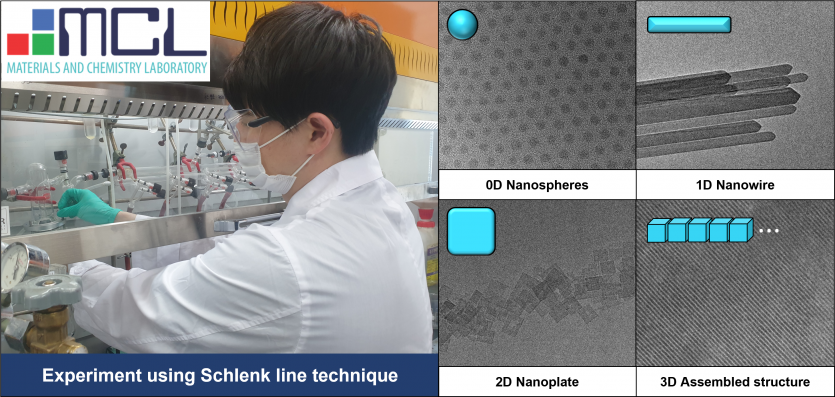
In our lab, we focus on the study of precisely controlling and applying the synthesis of nanoparticles of various compositions, sizes, and shapes through the solution process. We have a complete set-up for the synthesis of nanoparticles, which we use to explore the emergent properties of the nano-world. In addition, we are collaborating with various laboratories, and trying to apply nanoparticles with these interesting properties to new applications.
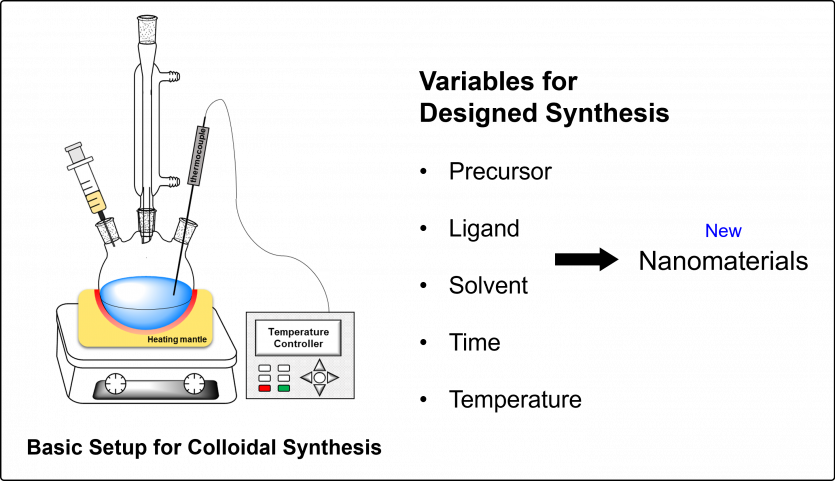
For the design and synthesis of new nanoparticles, we consider various variables and precisely control them to discover new nanomaterials with desired properties and explore their emergent properties.
2. Synthesis of Quantum Dots with Desired Optical Properties
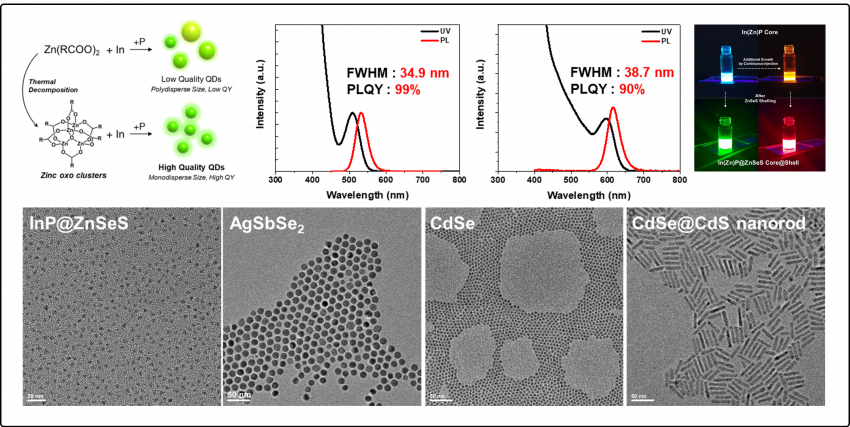
- Synthesis of QDs through hot-injection and heating-up method
- Development of advanced synthetic method for multi-dimensional QDs
- Development of newly designed precursors to regulate the reaction kinetics
- Synthesis of various QDs (III-V, I-IV-VI, Cd-based QDs and multi-dimensional QDs, Metal nitride QDs)3. Synthesis of Perovskite Nanocrystal
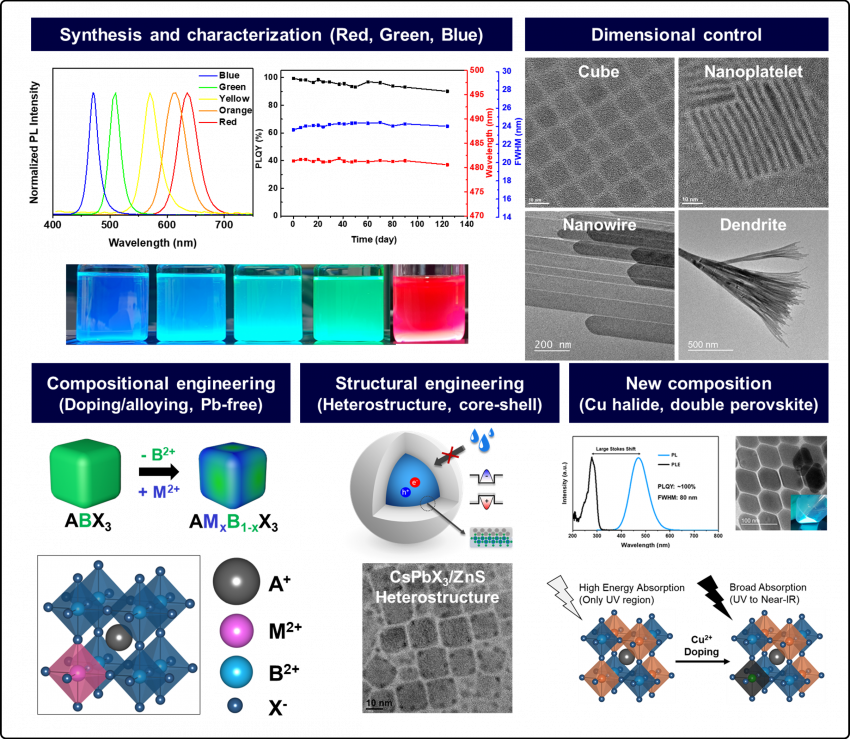
Synthesis and characterization of perovskite QDs
- Design of advanced synthetic process (Hot-injection, heating up, ligand-assisted reprecipitation etc.)
- Dimensional control for suitable application
- Analysis of optical properties such as photoluminescence, quantum yield, defect level, etcImprovement the stability of perovskite QDs via compositional and structural engineering
- Variation of properties by atomic doping and alloying
- Surface defect passivation via the core-shell and heterostructure
- Enhancing the stability based on surface engineeringExploration of emerging perovskite materials without heavy metal (Pb)
- Synthesis of double perovskite QDs by modifying B-site cations and introducing heteroatoms
- Synthesis of perovskite-like nanocrystals such as Cu(I) halide nanocrystals for optoelectronic devices4. Device Fabrication for QDs and Perovskite based LED
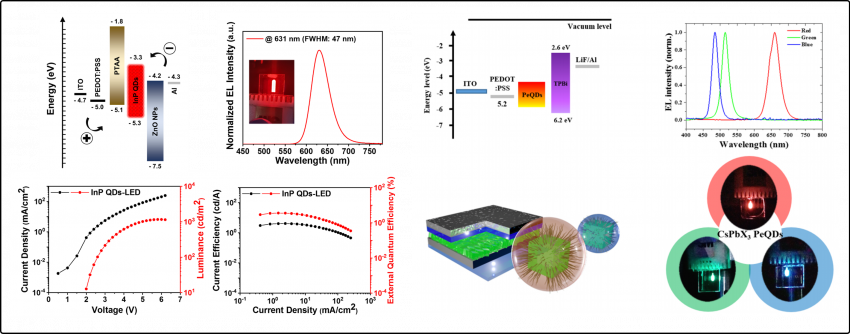
- Application of colloidal QDs for optoelectronic devices
- Optimization of surface chemistry of QDs for optoelectronic devices
- Design optimal charge transport layers for efficient charge injection
- Fabrication of QD-LEDs with high external quantum efficiency and stability1. Surface Engineering of Nanocrystals for Biological Application
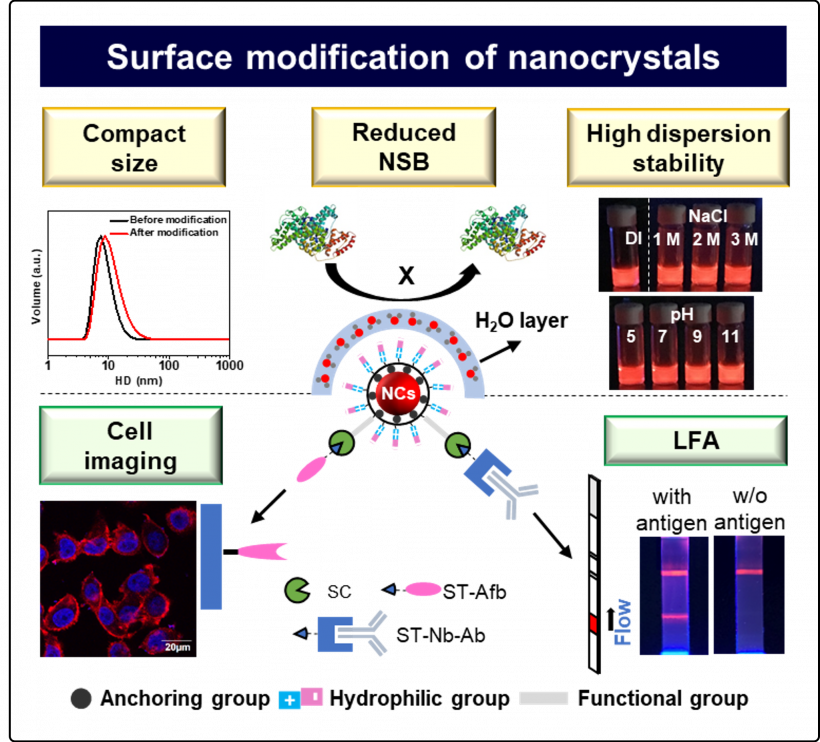
Inorganic nanocrystals have been attracted due to its unique characteristics. Especially quantum dots (QDs) exhibit unique optical properties that are not detected in bulk materials. In order to use these nanocrystals in bio-application, it is necessary to ensure bio-compatibility, high stability and provide conjugation site for biomolecules through surface modification. We have interest in developing and synthesizing new ligand designs that responsive to external stimuli and are capable of specific targeting. It is also very important to control surface ligands for industrial applications such as QDs-based diagnostic kit, and nanosensors.
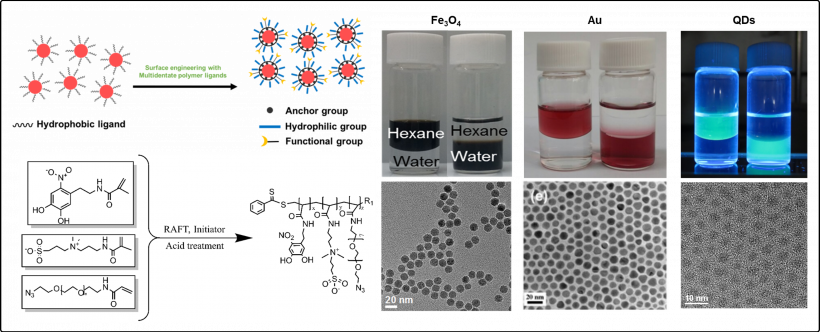
- Surface engineering of nanocrystals for biological application
- Substitution of original hydrophobic ligand with hydrophilic polymer
- Development of multidentate, multi-functional polymers by RAFT polymerization
- Enhancing stability of water-soluble nanocrystals via cross-linking reagent
- Optimization of nanocrystal surface chemistry for cell targeting2. Surface Engineering of Nanocrystals for Optoelectronic Applications
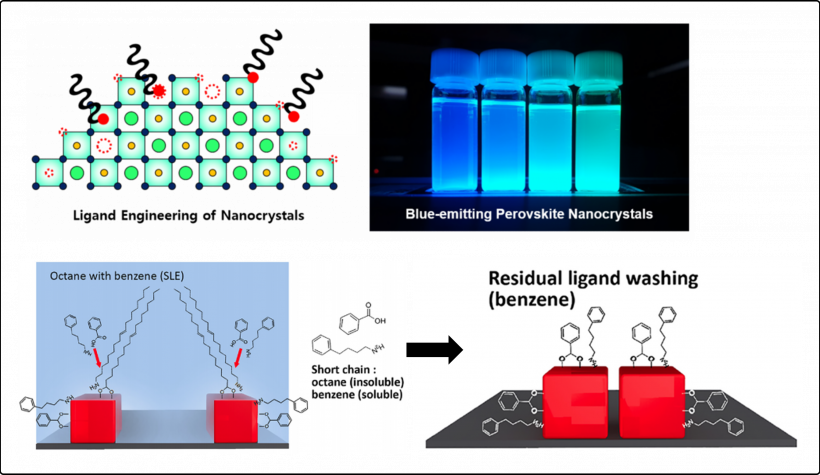
- Short chain ligand exchange for facilitating charge-injection by reducing surface resistivity
- Synthesis of high stability quantum dots through substitution with ligands with high binding affinity
- Development of mixed-ligand system considering steric hindrance on the surface1. Development of Ultra-sensitive, Highly-specific Biosensors

LFA (Lateral Flow assay)
- Simple deviceds intended to detect the presence of a target substance in a sample
- Without the need for specialized and costly equipment
- LFA is widely used in medical diagnostics for home testing, POC testing or laboratory useSensitivity
- Sensitivity is a measure of how well it detects people with the disease
- Improving diagnostic sensitivity is important for detecting diseases
- We convert materials from AuNPs to QDs to improve the diagnostic sensitivity of LFAApplication
- The LFA kit can easily identify a variety of diseases and use our nanomaterials to create a variety of colors, so it can be applied as a multi-diagnostic kit to identify different diseases (ex: SARS,MERS, COVID-19) in one kit2. Bioimaging; Optical Imaging of Cancer Cell using Quantum Dots
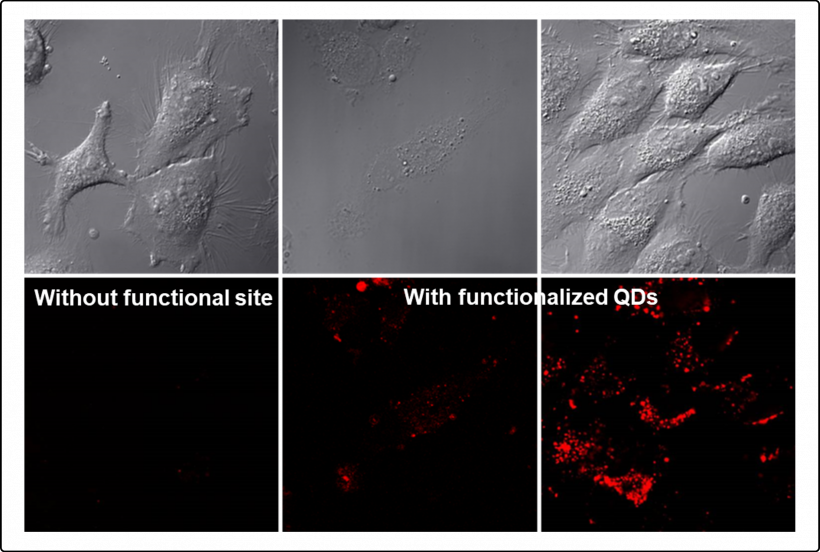
- Development of new optical imaging probes of QDs conjugated with overexpressed surface receptors on cancer cells/tissues
- Reduction of nonspecific binding to cellular membranes by surface engineering of QDs
- Improvement of long-term stability and biocompatibility of QDs in an aqueous medium3. Bioimaging; Magnetic Resonance Imaging using Magnetic Nanoparticles

- Multidentate catechol-based brush polymer synthesis for excellent stability and long circulation in vitro and in vivo
- Tailor-made surface properties by ligand exchange
- Controllable assembly and MR imagingMagnetic resonance imaging (MRI) has become one of the important methods of clinical disease diagnosis, and 40%~50% of clinical MRI examinations require the use of contrast agents to improve the sensitivity of MRI. Therefore, MRI contrast agents have also become important clinical diagnostic drugs. Superparamagnetic iron oxide nanoparticles (IONP) are frequently used as T2 contrast agent in vivo since the high safety and good biocompatibility. To improve the sensitivity and the MR contrast effects, we are focusing on the development of chemically engineering (multifunctional surface ligand synthesis and ligand exchange) and controlled assembly, which can provide a unique approach to manipulate the collective magnetic properties of the IONP that directly influence their MR contrast effects.
